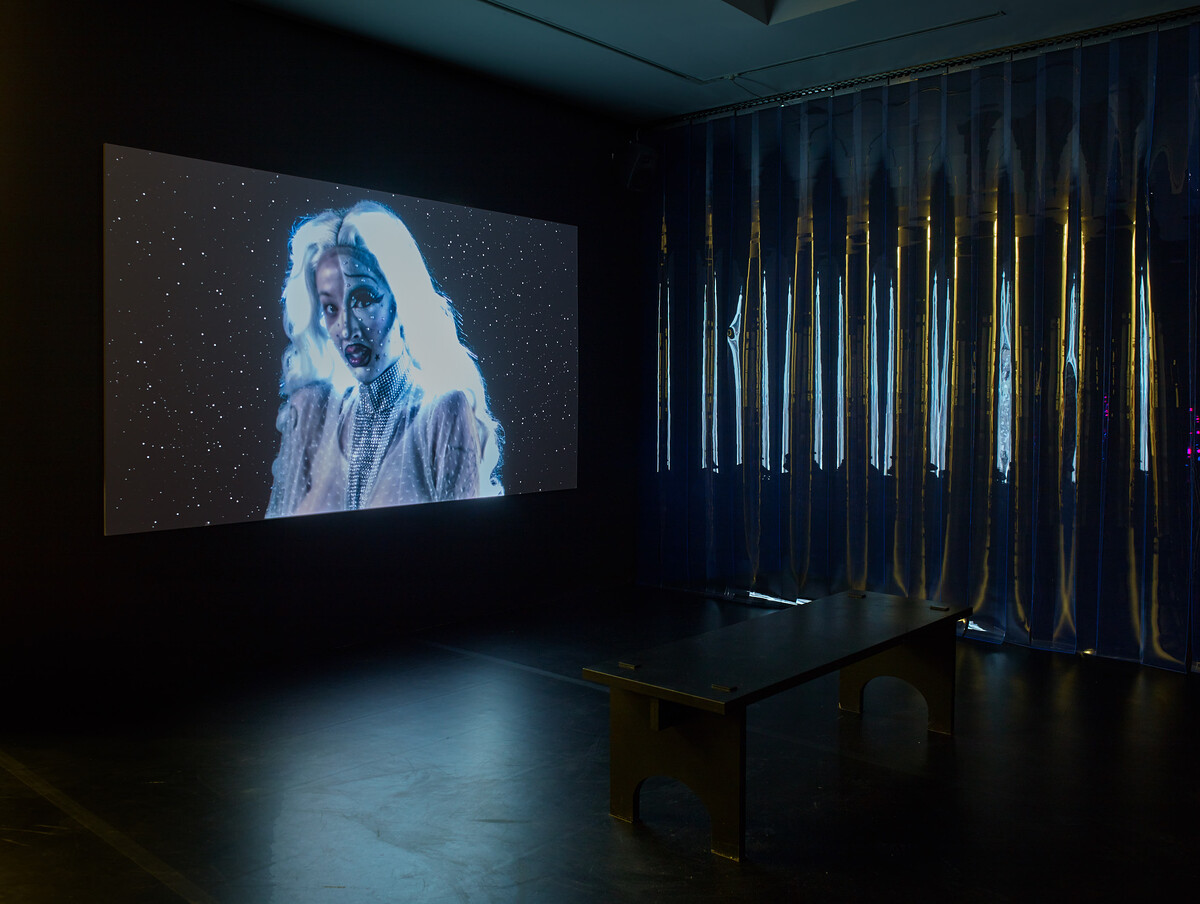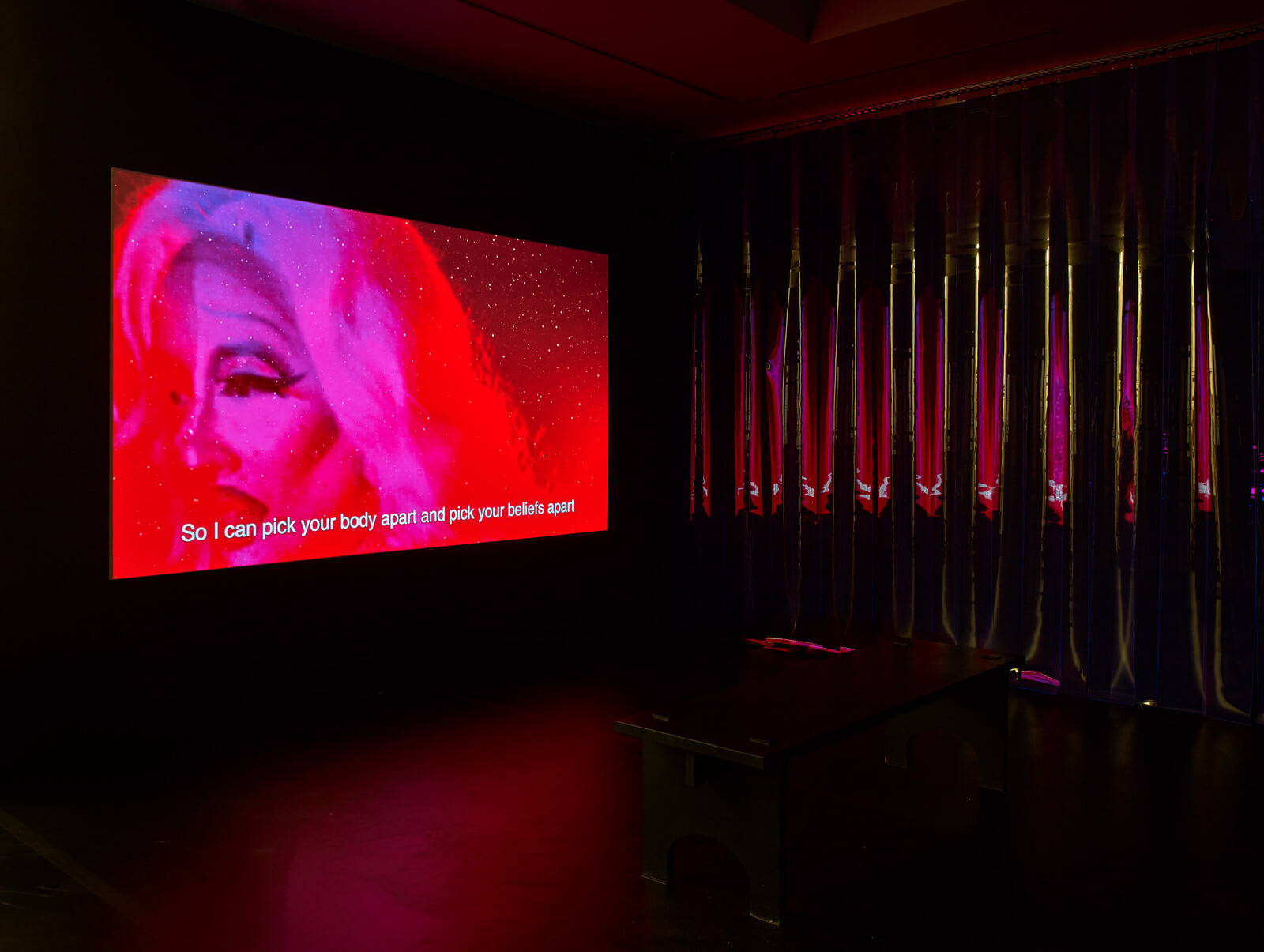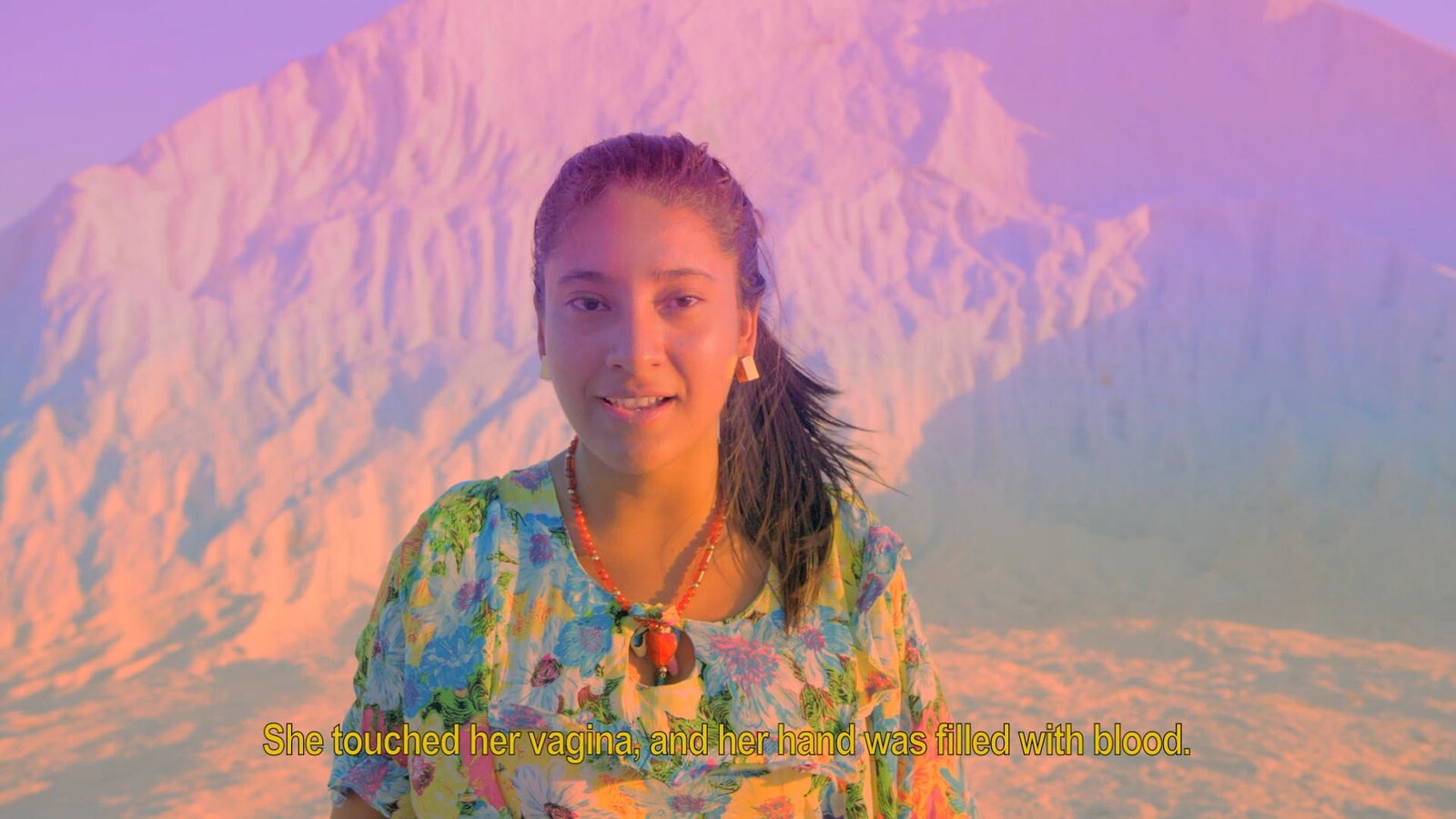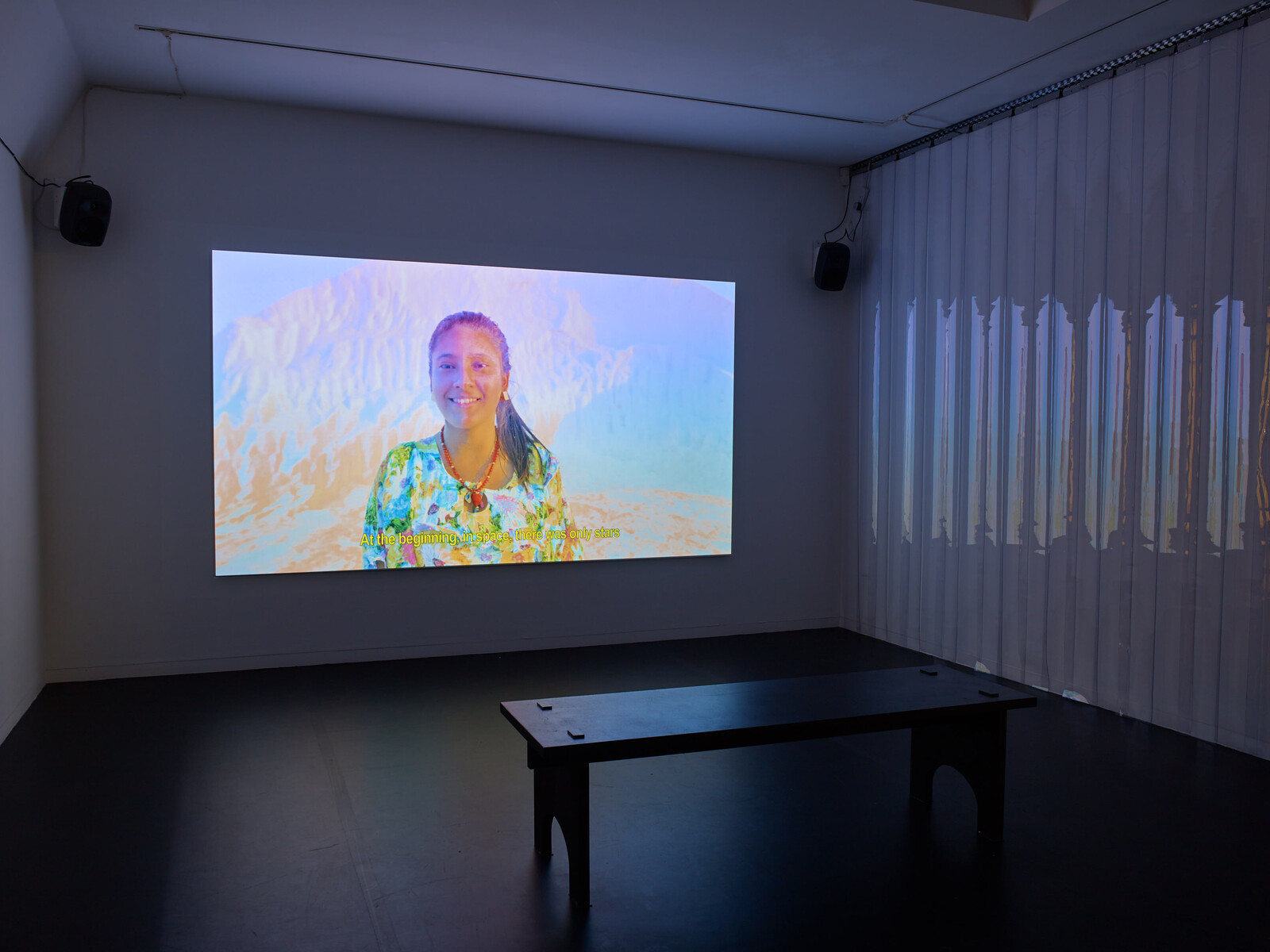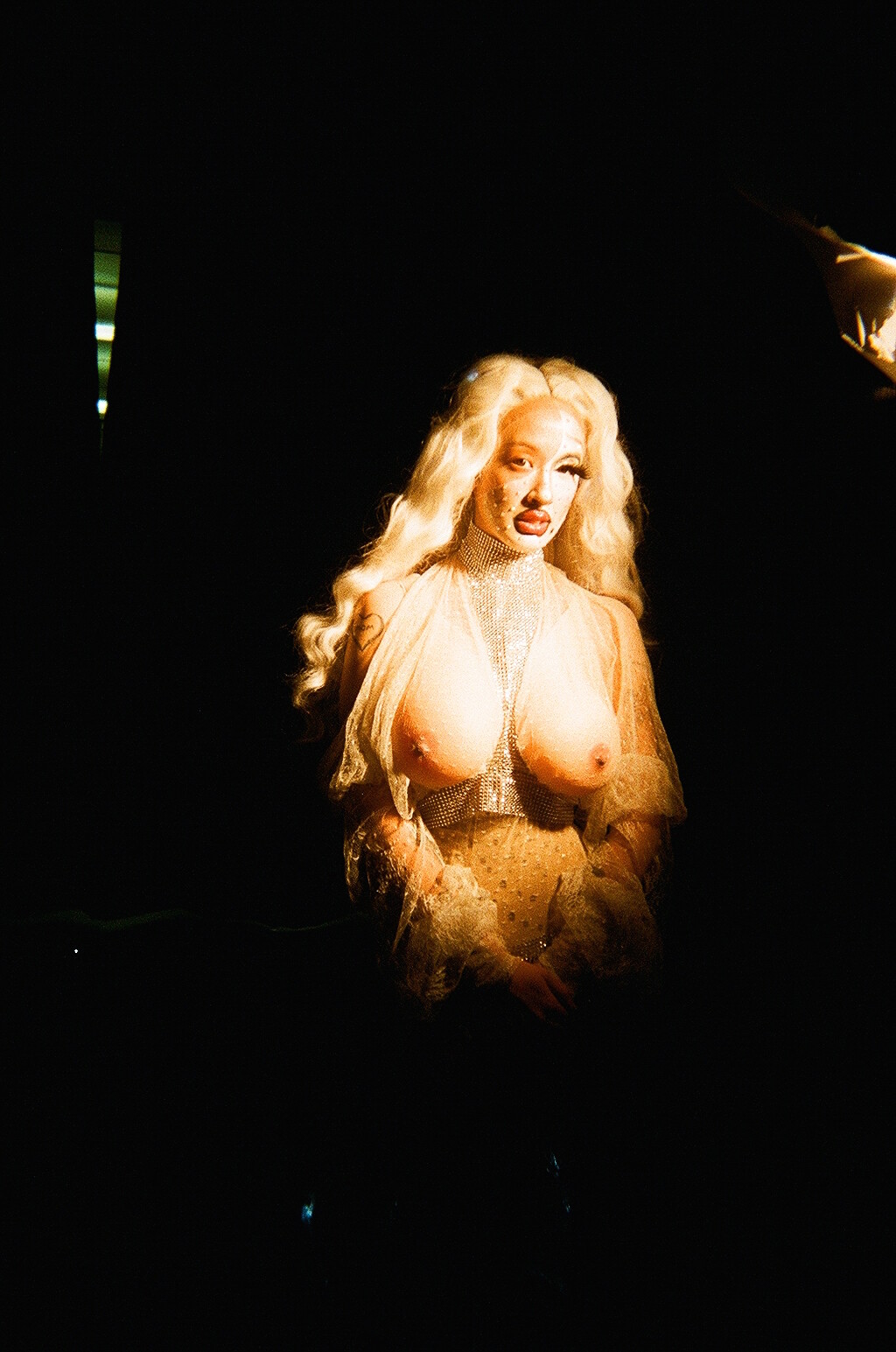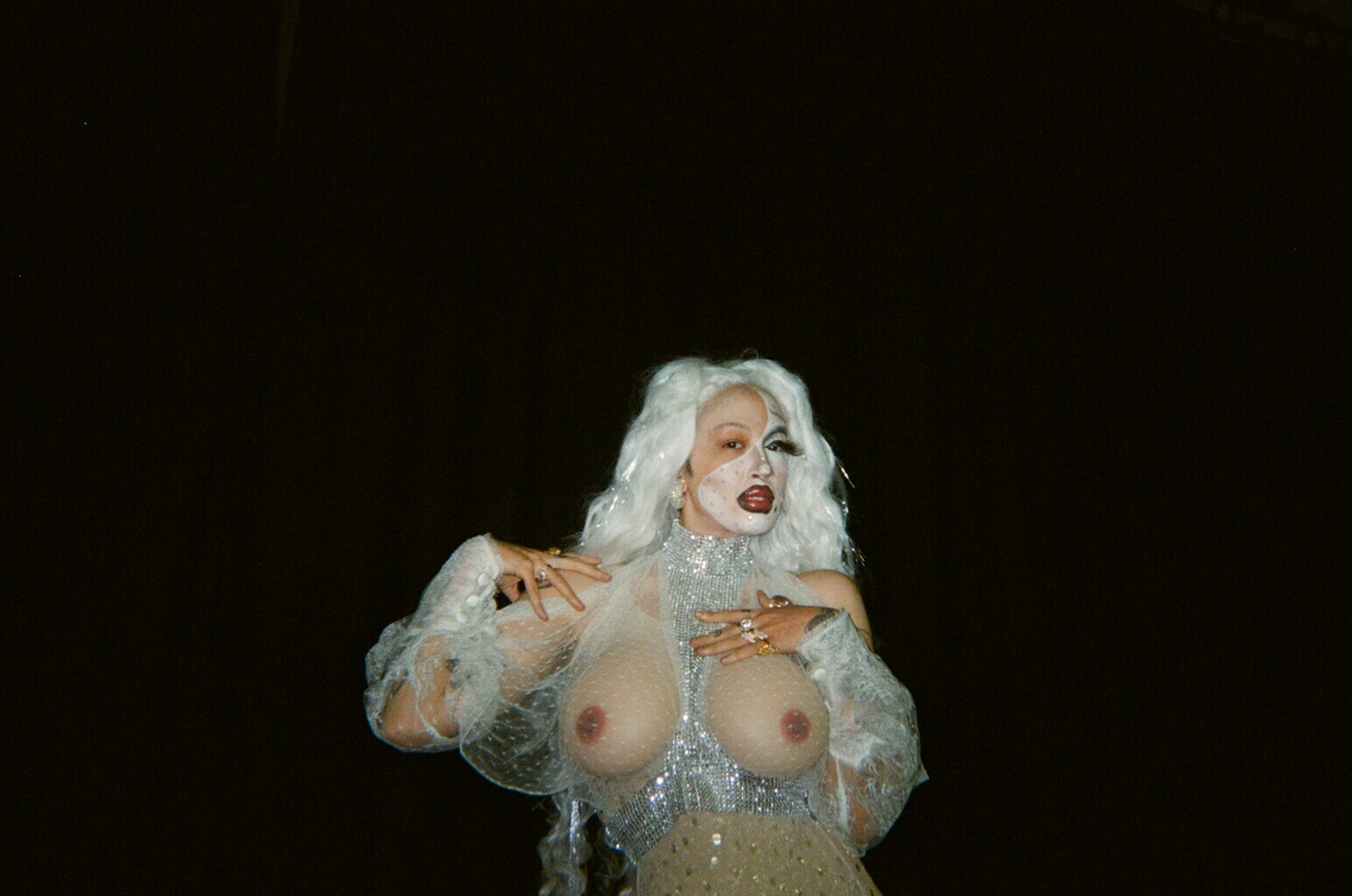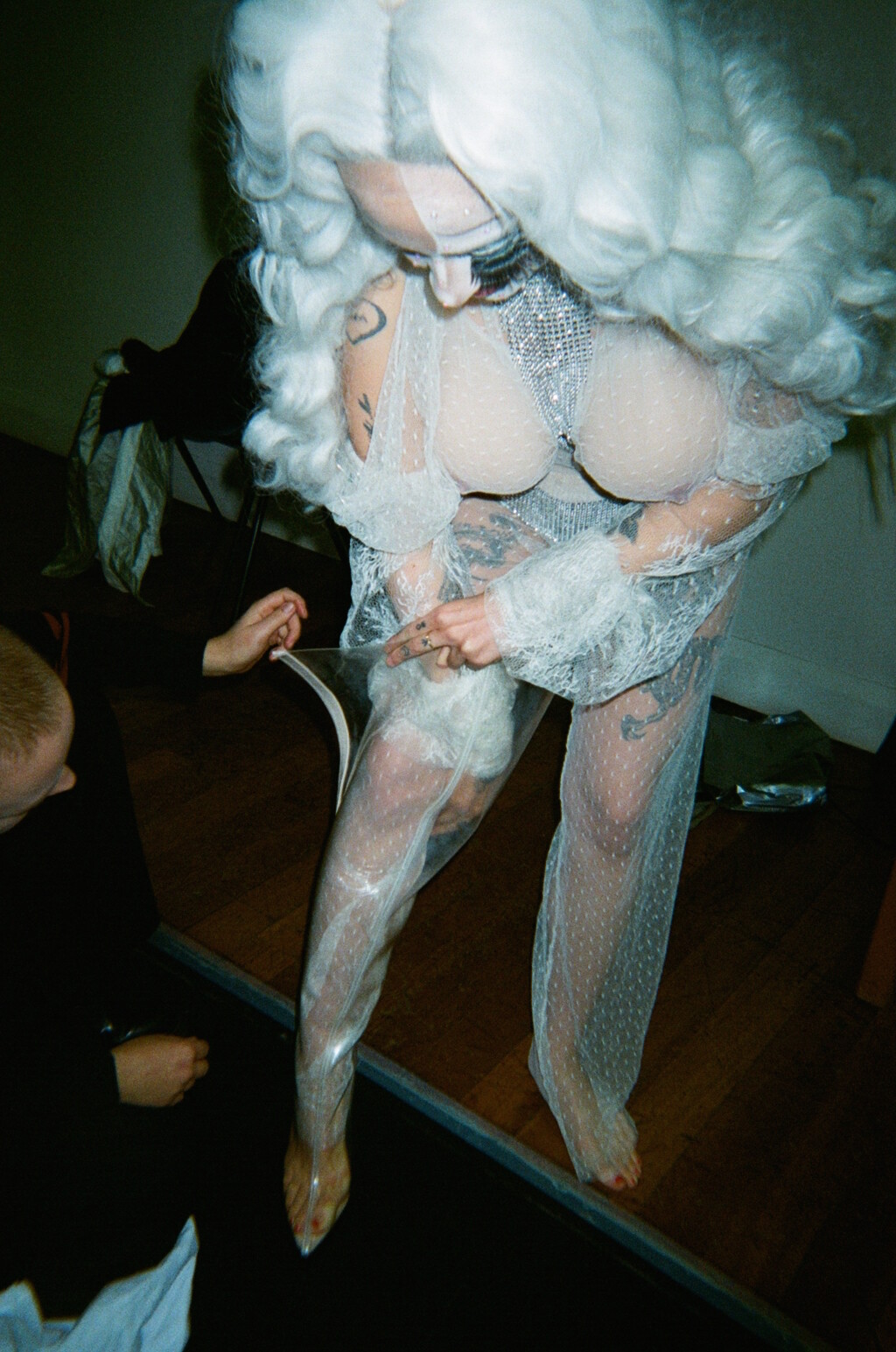Sophia Al-Maria’s exhibition at Whitechapel Gallery—in which two films are separated by a thick PVC industrial strip curtain, one screened in a room painted black, the other white, one rooted in the future, the other the past—is the culmination of her position as the gallery’s writer in residence. Over the last year, the artist organized a series of associated events (intended specifically for women and non-binary guests) that correspond with the rhapsodic narrative texts written for the Whitechapel website: “We Share the Same Tears,” “We Swing Out Over the Earth,” and “We Ride and Die With You.”
Al-Maria was inspired by Ursula K. Le Guin’s 1986 essay “The Carrier Bag Theory of Fiction,” which posed an alterative, non-linear, feminist form of storytelling realized through speculative fiction. In the essay, Le Guin writes that the first useful tool for humans is a carrier bag for food—“a leaf a gourd a shell a net a bag a sling a sack a bottle a pot a box a container”—rather than the “sticks and spears and swords” of masculine domination. For her, the carrier bag becomes a metaphor for the telling of multiple stories that resists the narrative of the “bashing, thrusting, raping, killing” hero. “The natural, proper, fitting shape of the novel might be that of a sack, a bag,” writes Le Guin. “A novel is a medicine bundle, holding things in a particular, powerful relation to one another.”1 “For me,” writes Al-Maria, “this text is a bag. / It will be a weeping receptacle, a sort of spittoon for projectile tears, a sling for carrying bad blood. […] / I am making of this bag a body. / My body. […] / A sad sack for sick songs.”2
Le Guin belongs to a lineage of feminist science fiction writers who used the genre to expose, subvert, and rewrite patriarchal mythology and colonial narratives. This methodology is implicit in Al-Maria’s video Wayuu Creation Myth (2018), which is projected against the white walls of the first room in the exhibition. Shot in the salt flats of Manaure in northern Colombia—against the iridescent, pastel rainbow palette of the terrain—the video is narrated by Ziruma Jayut of the indigenous Wayuu people. Jayut tells the story of the Wayuu Ur-woman, Wolunca, the daughter of rain (Huyá) and earth (Má). Wolunca is kept in captivity until her first menstruation, when she becomes a “woman.” When she emerges, Huyá’s two sons compete for her, shooting arrows at her body to try and remove the teeth from her vagina dentata, which results in Wolunca bleeding heavily, filling a lake with blood. Huyá, fueled by fury, turns her sons to stone. The tale articulates castration anxieties: the removal of teeth is a metaphor for the restriction of female sexuality in lieu of a sanitized, non-threatening partner.
If Wayuu Creation Myth is a unique story about how the world began, then the second video, BCE (2019), made with artist Victoria Sin, ventures the coming of the apocalypse. The videos play consecutively, not concurrently: when one ends, the other starts, creating a sense of perpetual dialogue, a call and response. The viewer moves into the second room of the exhibition, which is painted black. Al-Maria asked Sin (who has also collaborated on each iteration of her public events) to conceive and write their own creation myth, which they perform to camera. Multiple hard copies of this text—which begins with Al-Maria asking Sin “how did the world end?”—are available for free in the space, arranged at a Perspex writing desk spot-lit by blue LED light. Meshing intergalactic drag with lurid body-horror aesthetics—large silicone breasts, a cascading wig, sheer fabrics, and alien silver tones—Sin presents as a celestial, fantasy being: a visitor from outer space.
Influenced by the dystopia in Octavia Butler’s Parable of the Sower (1993)—in which, writes Sin, “Butler imagined an America after the verge of collapse, where a new leader has come into power through tactics of fear and paranoia and oversimplified narratives, who promises to ‘make America great again’”3—Sin’s myth frames an apocalypse as an opportunity to rebuild the world, liberate individuals, and destroy hierarchy. Their text provides an alternative to the binary essentialism in the story of Wolunca, conceptualizing bodies as infinite perspectives and possibilities in an infinite world, an endless manifestation of cells, bacteria, microorganisms, enzymes, molecules, proteins, atoms, wounds, veins, neural pathways, brains, internal organs, and bones. Sin’s words echo the culmination of Le Guin’s essay, in which she describes science fiction as an attempt to narrate “what people actually do and feel, this womb of things to be and tomb of things that were, this unending story […] there are seeds to be gathered, and room in the bag of stars.”
All quotes from Ursula K. Le Guin, “The Carrier Bag Theory of Fiction,” in Dancing at the Edge of the World: Thoughts on Words, Women, Places (New York: Grove Press, 1989), 169–170.
Sophia Al-Maria, “We Share the Same Tears,” Whitechapel Gallery, 22 March 2018 https://www.whitechapelgallery.org/about/blog/we-share-the-same-tears/.
Victoria Sin on Ursula Le Guin, Auto Italia, 7 February 2018, http://autoitaliasoutheast.org/news/victoria-sin-on-ursula-le-guin.
